Chapter 1, Part 5
One cold Sunday, Badai, Bart, James and I were hiking in darkness, relying only on our head torches to follow the path and not get lost. We were told earlier by a man at the base camp not to stray into the wrong way up where exposed cables crisscrossed over the ground, leading to a communication tower. The thermometer read 5 degrees centigrade when we started the hike. But as we ascended the mountain we could feel the temperature dropping, and once we reached the summit of Mount Prahu where trees were scarce and the wind brought the chill to our bones. It was just a little over 2,600 meters above sea level, but it felt much colder than the higher mountains we have been.
Finally we reached the sunrise point just before 6, by that time the first rays of light started to reveal Java’s conical volcanoes, their slopes still covered in ethereal mist. The peaks of Mount Sumbing, Sindoro, Merbabu, Merapi and Slamet pierced the sky in an otherworldly setting, a realm so majestic humans often reserve to gods and celestial beings. Indeed the ancient people called this place Di Hyang, ‘Abode of Gods’, and today it is better known as Dieng, a plateau right at the heart of Java.
When Hinduism arrived on the island, introduced by South Indian traders and priests, Hindu kingdoms sprouted in the western part of Java around the sixth century AD. Gradually the influence of the nascent religion moved eastward and reached the heart of the fertile, volcanic island. In the mid-seventh century King Santanu became the ruler in coastal Central Java and a few decades later his successor, Dapunta Selendra, established a dynasty that would rise to prominence and commence an era known as the Javanese classical period.
Sailendra (also spelled Shailendra), as the dynasty is known, gradually gained control of more lands as its influence spread beyond coastal areas of northern Central Java. Shaivism (a sect of Hinduism) was the main belief of the royal family, hence the proliferation of small, sometimes two-story high, Hindu temples chiefly on the highlands of Central Java, including on Dieng Plateau.
Candi Bima (originally means temple but now candi is used in Indonesia to describe ancient Hindu-Buddhist structures) is believed to be one of the oldest of all candis in Dieng, according to the information at the local museum. There is no clear evidence indicating the exact year of construction of the candis on the plateau, but scholars agree that the constructions took place in two phases, spanning the seventh to eighth centuries AD. Candi Bima, after the second oldest of the Pandavas, has evident South Indian influences. The name itself is reminiscent of Panca Rathas and the architecture resembles a vimanam – raised structure above a sanctum where statues of Hindu deities are enshrined – with multiple kudus – arched decorations on a temple’s facade, both are typical Dravidian architectural features. Even the word for temple in modern Indonesian is kuil, from the Tamil word koil.
To the south of Candi Bima lies the main and most popular group of temples in Dieng. Candi Arjuna, the biggest of the group, sits at the south end. In front of it lies Candi Semar which looks more like the mandapa (pavilion) of Candi Arjuna than an actual temple itself. Candi Srikandi, Puntadewa and Sembadra sit south of Candi Arjuna with the former having images of Vishnu, Shiva and Brahma – the Trimurti – sculpted on its north, east and south sides, respectively. Separated from the main group by a short path, the solitary Candi Setyaki is surrounded by vegetable fields with white steam puffing into the air occasionally spotted in the background, a telltale sign of the plateau’s volcanic activity. Further south another group of temples sits near the museum with Candi Gatotkaca its biggest as well as the only candi that has been restored.
Despite its apparent Indian influence, the Javanese version of characters from Mahabharata has slight differences. Yudhistira, the oldest of the Pandavas is also called Puntadewa, ‘one whose greatness is like that of a god’. Meanwhile Sembadra is the Javanese name for Subadra, wife of Arjuna. However Srikandi and Gatotkaca are depicted quite differently in Javanese tradition compared to the original Indian version.
Srikandi, known as Shikhandi in India, was born a girl. But in Mahabharata he became a man in his adult life, a rare mention of transgender in any of the world’s epic. But in Indonesia Srikandi was always a woman, and she was also married to Arjuna – probably one of the reasons why the latter is not my mother’s favorite character. Thanks to the depiction of Srikandi as a strong woman and an excellent archer, Indonesian female athletes are often nicknamed ‘modern-day Srikandis’.
On the other hand Gatotkaca, known as Ghatotkacha in India, is always depicted as a strong, handsome hero wearing a Javanese wayang (traditional puppet) headdress and a vest with a sun emblem on it. Gatotkaca to Javanese is like Superman to a lot of kids around the world. In India, however, he is depicted sometimes as a bald half-Rakshasa (in Indonesia the word raksasa means giant), some other times with hair, but always shirtless.
However the true difference between Indian Mahabharata and the Javanese version of the story is the addition of a group of characters called the Punakawan in the latter. They are four servants, or clowns, depending on how one perceives them, to any hero. In Javanese wayang performances they usually appear between the main acts, always talk in Ngoko (the least refined form of Javanese usually used to communicate with friends) and at all times comical.
Semar, one of the characters who acts as a father figure for the other three, is a personification of a deity. My father describes him as a god who descended to earth and disguised himself by taking the form of a fat-bellied old man. Due to Semar’s unassuming appearance, the hero always takes his advice as a representation of grassroots opinion.
In the dining area at my parents’ house an image of Semar and Kresna (Krishna) is hung on the wall. “Kresna is an adviser to the Pandavas from the god’s side, while Semar represents the people,” my father explains and adds, “it’s like democracy.”
More than a thousand years after the introduction of Hinduism from India, bringing the Mahabharata, Ramayana and other cultural treasures to the new land, the characters are still very much alive in today’s predominantly Muslim Javanese community. Not for religious purposes, but rather as a contemporary philosophical source.
Click here for the full list of stories from the Spice Odyssey series.
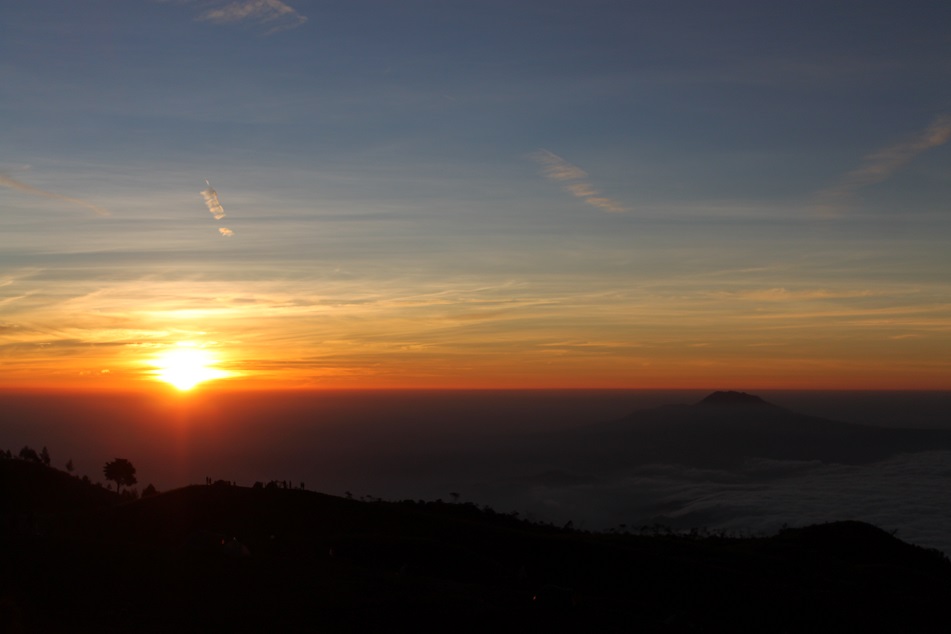
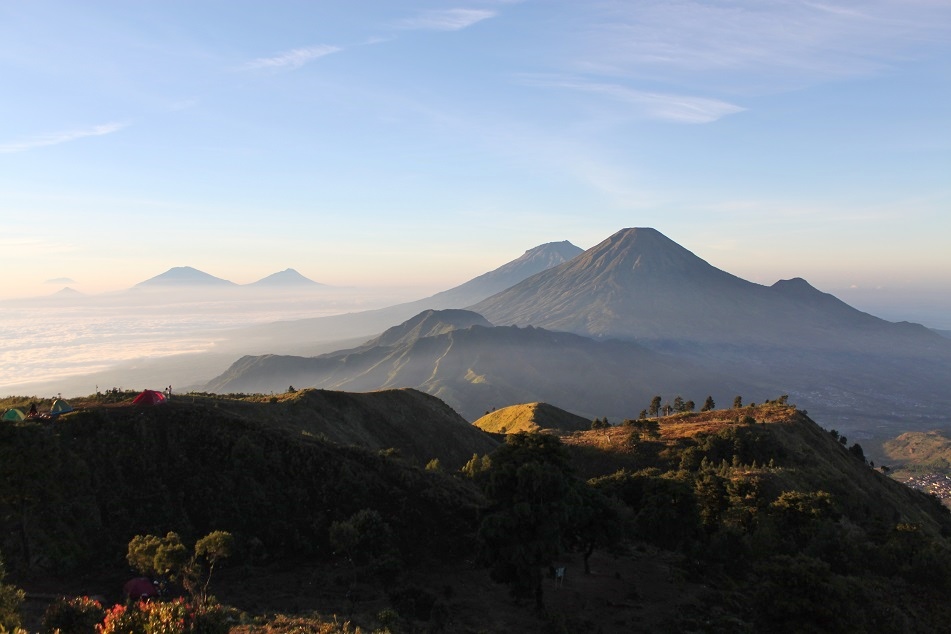

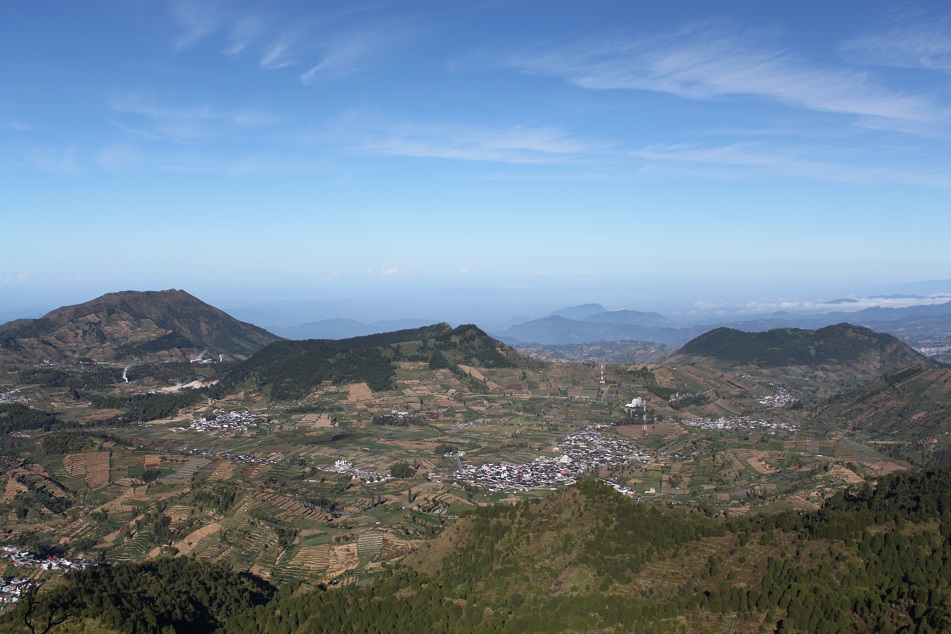


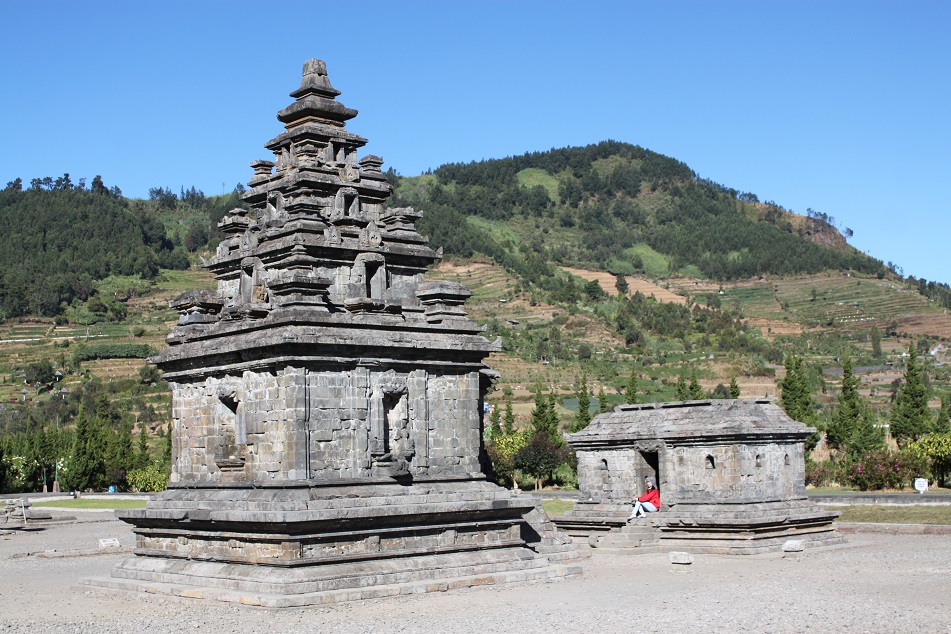

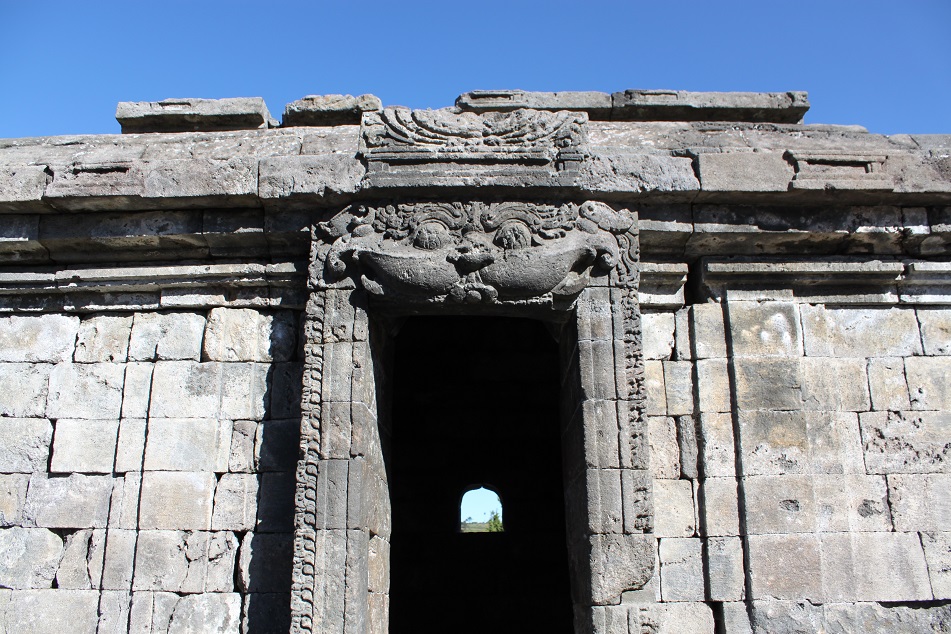
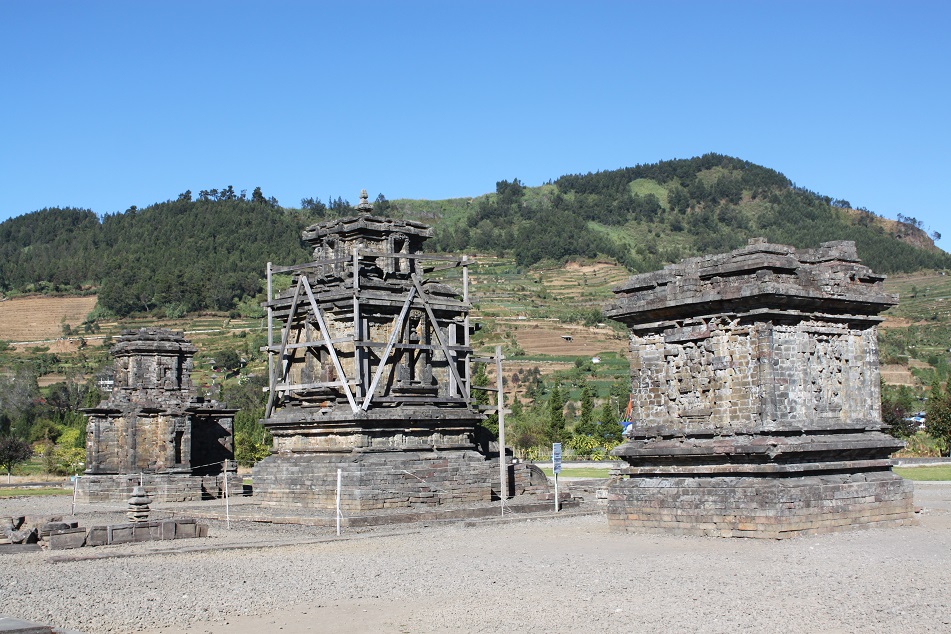
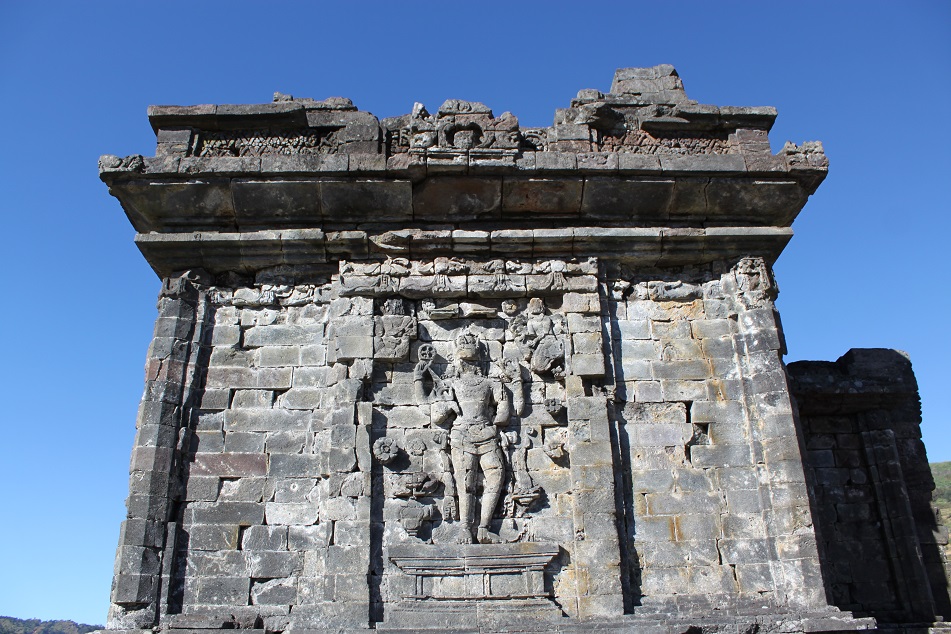

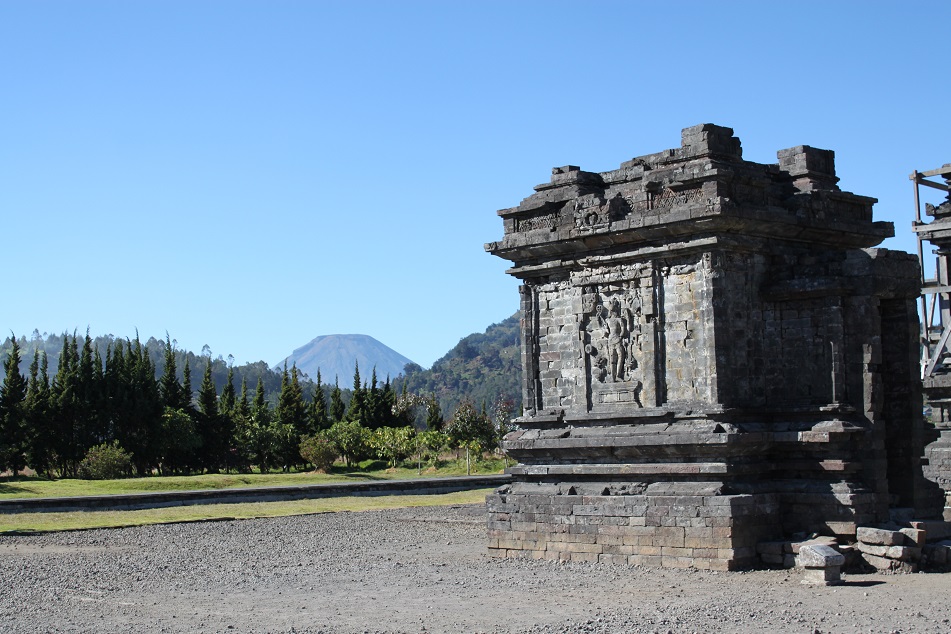
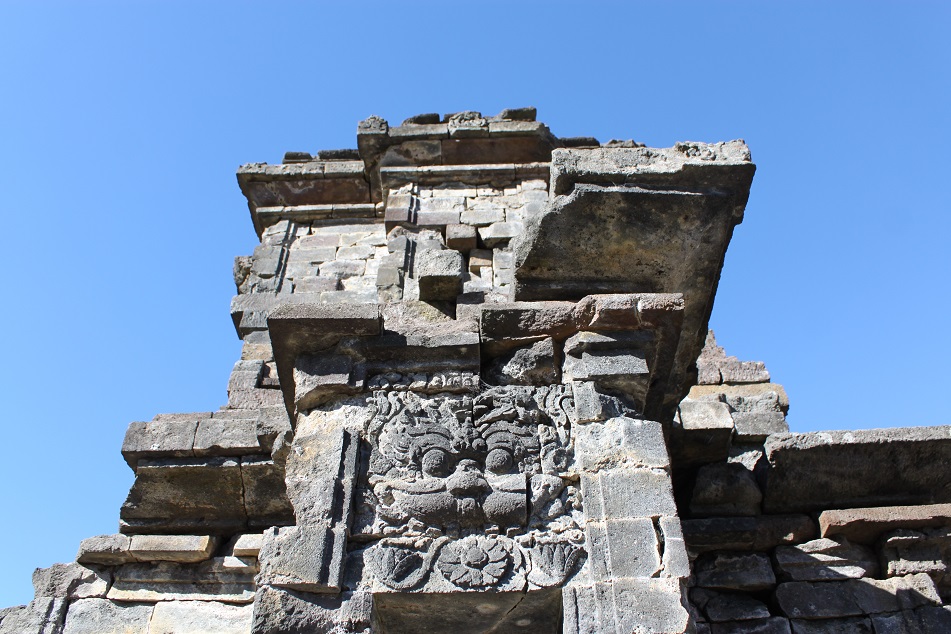
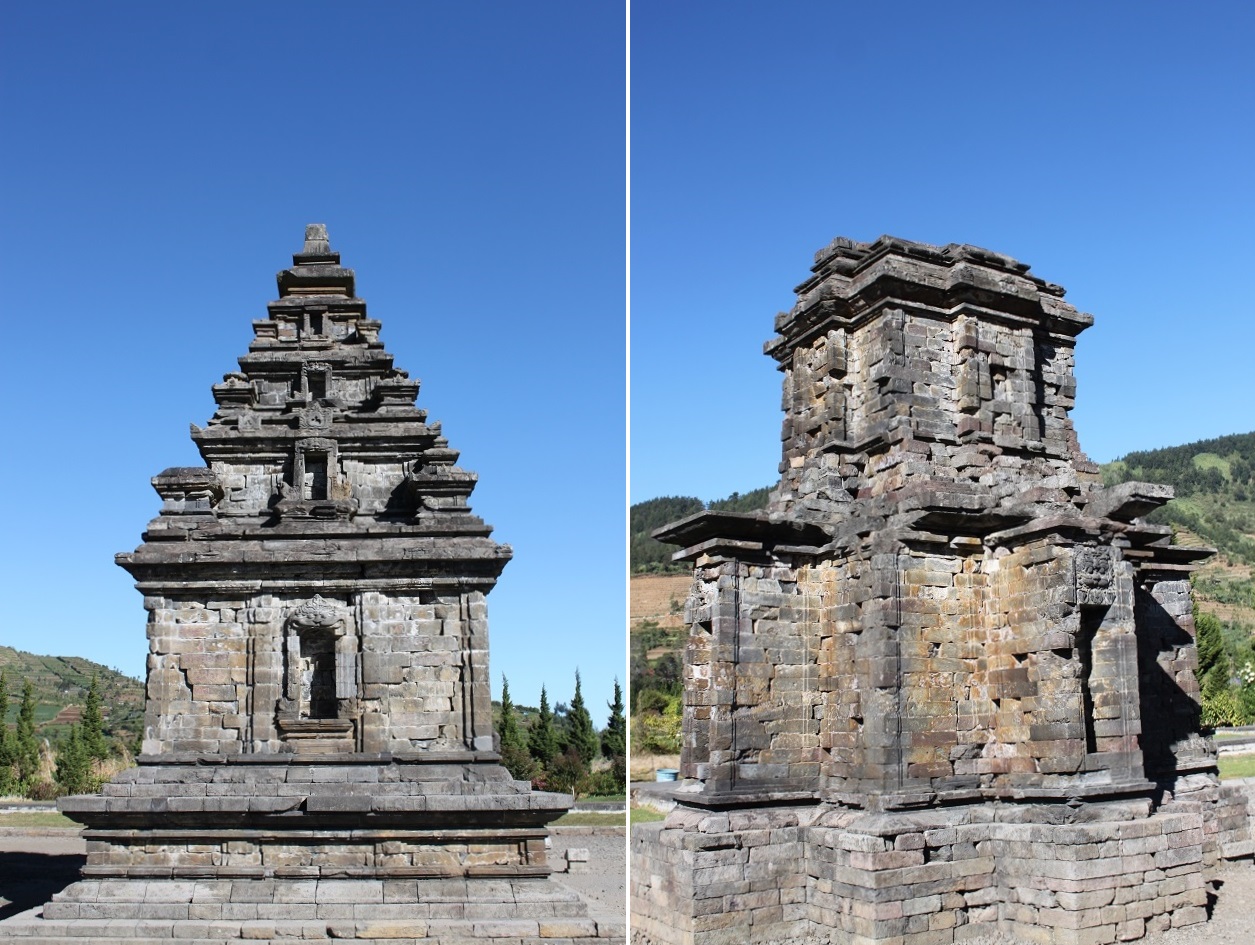

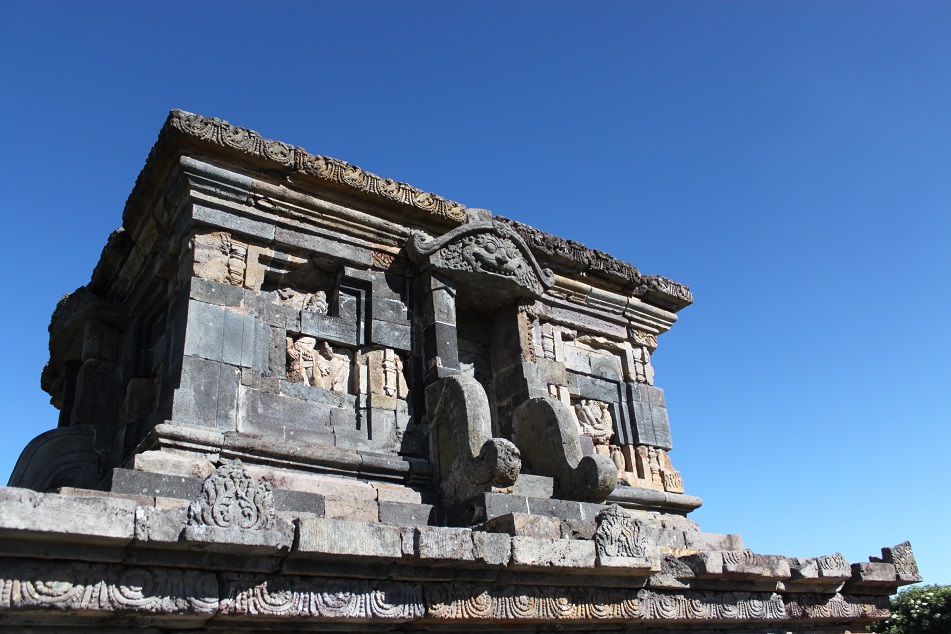

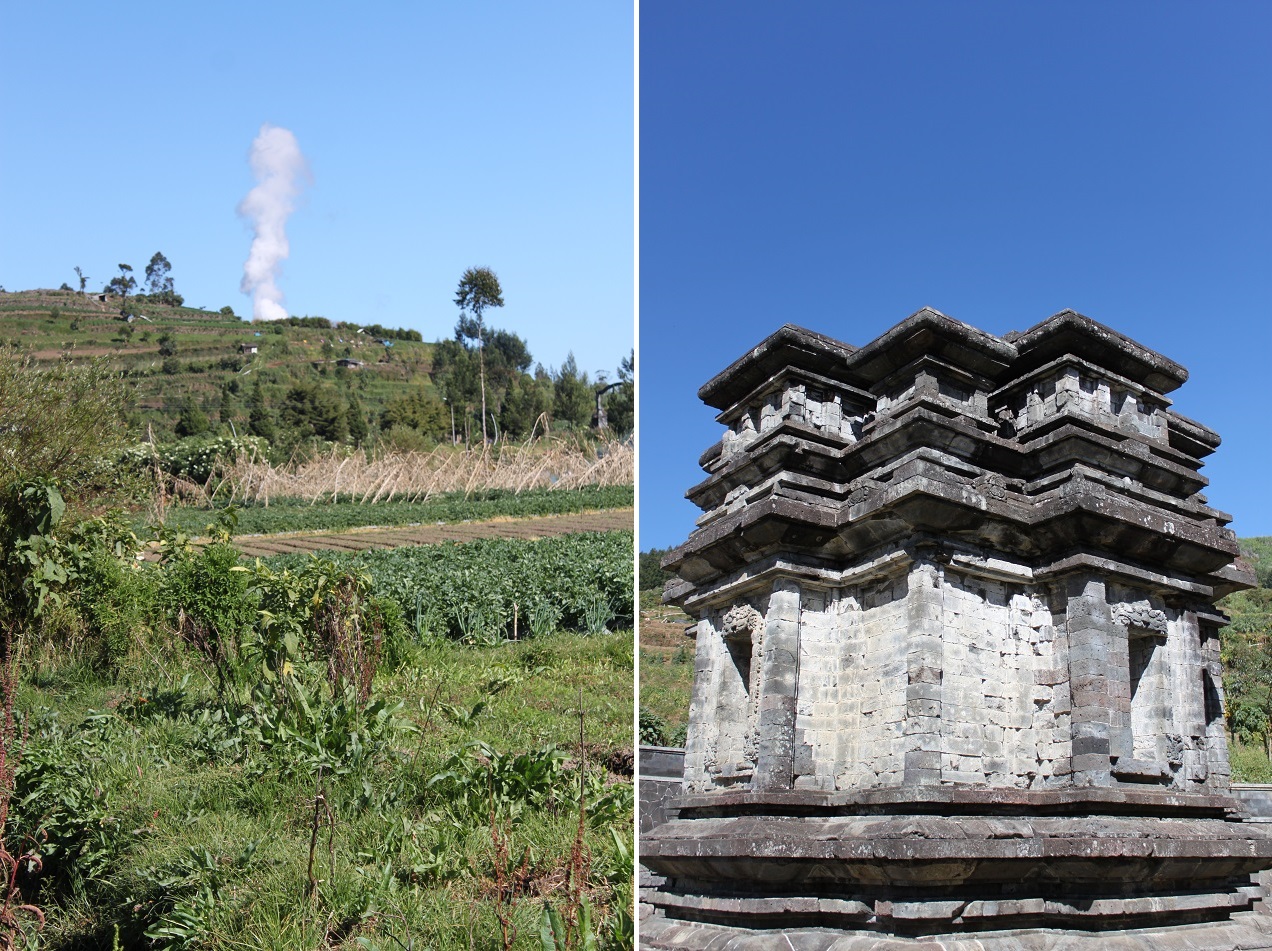
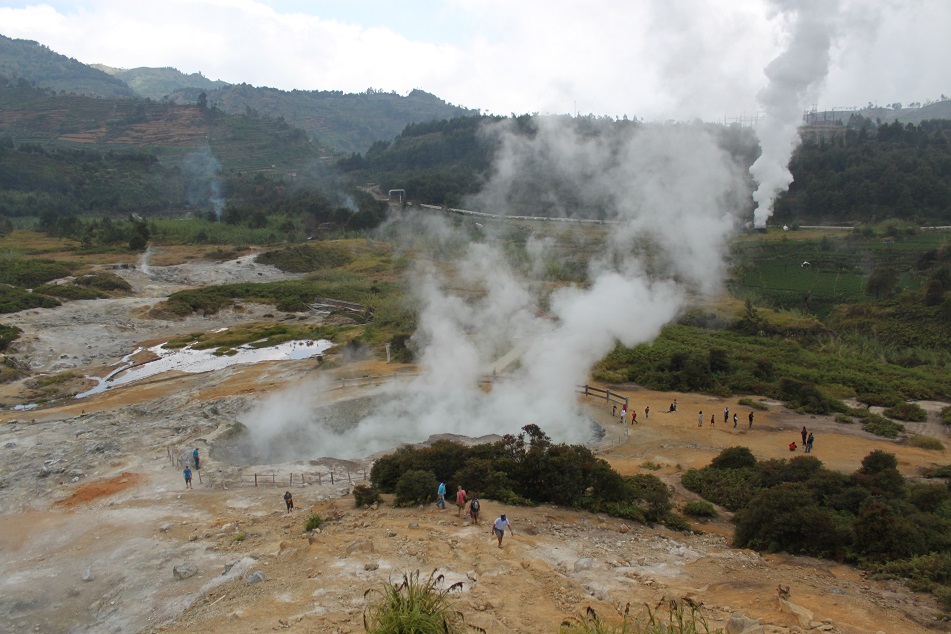
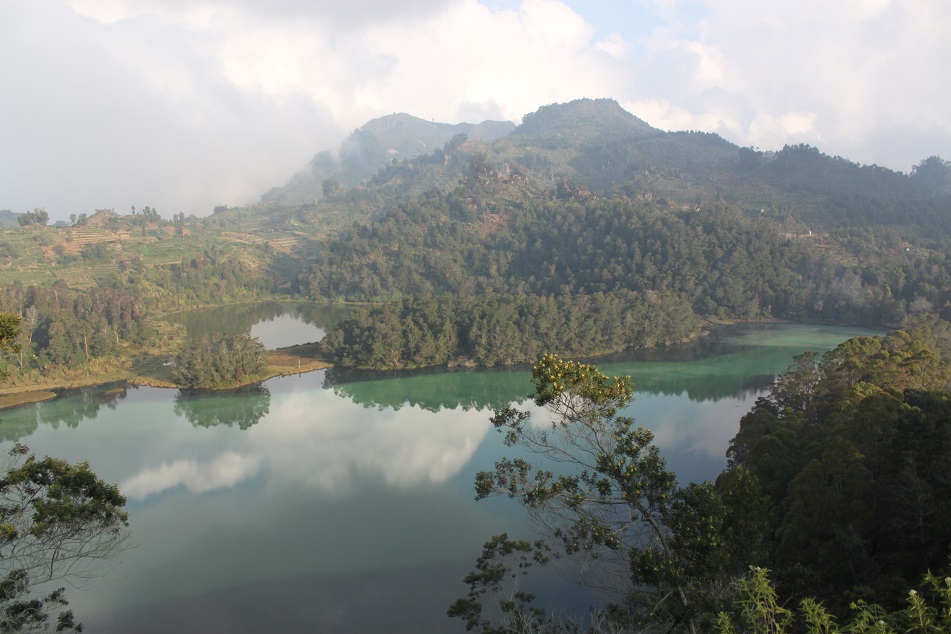
Great Post
LikeLike
Thank you, Mukul. I’m glad you enjoyed this post.
LikeLiked by 1 person
welcome.
LikeLike
Wow, just the picture alone immediately caught my attention! I love this!
LikeLike
Thank you, Bethany. That’s very kind of you.
LikeLiked by 1 person
You are quite a story teller, and what an incredible place. Wonderful photos, thank you for sharing this.
LikeLike
Wow, thank you for your kind words, Miriam. I was lucky the weather was mostly good when I was there, so I could take photos of the temples with blue skies. Thank you for reading!
LikeLiked by 1 person
Wow. I’m astounded at the breadth and depth of your knowledge. This post is a real lesson in history, architecture and world religion. Fascinating! Especially as I compare your photos with the structures I saw at Prambanan. The photo of volcanoes from Mount Prahu is gorgeous. Thanks for sharing your boundless insight in the context of another fun journey.
LikeLike
Kelly! You’re too kind, but thanks. 🙂 It was easier for me to write this post because I grew up reading Mahabharata and Ramayana, although a very small portion of them. My father’s interest in Javanese wayang also helped me understand the characters better, plus a little googling here and there for some fact checking. In the upcoming posts you will see the development of Javanese temple architecture, and how certain events in the region contributed to the process. At Mount Prahu I wore thick jacket, hat, gloves, everything… but I was still freezing. It shouldn’t be as much a problem for you, I believe. Thanks for reading and inspiring me to travel to more places!
LikeLiked by 1 person
Been camp in Mount Prau before, it is freezing up there. Eventhough I’ve been there, I hardly know about the history behind. So reading this post is kind of treat for me. Love it to the bone!
LikeLike
My friend and I have been to Rinjani, but it was not as cold as Mount Prahu, and we met people who said the same thing. My fascination toward ancient temples and that visit to the local museum (Museum Kailasa) help me understand better the history of Dieng, as well as all the books and articles that I read. Thank you, Melly!
LikeLike
Thanks Bama, I haven’t had the chance to travel to the Dieng Plateau region yet and your pictures really made me want to go there ! I love this atmosphere of altitude, deep blue skies, crips views … Also great of you to connect your visit to Candi Bima to intimate memories of your father’s love for Javanese wayang. It connect these old stones to a very real sens of culture, shared by people today, in the XXI century.
LikeLike
Thank you for reading, Juan. Dieng had been on my wishlist for years, so to be there a few months ago felt wonderful. It’s better to go in the dry season, with less clouds and for a better chance to see those volcanoes. I remember vaguely what my father taught me about Bima and other characters from both the Mahabharata and Ramayana when I was little. So to finally understand the story really means a lot for me. Hopefully the Javanese retain their rich cultural heritage for centuries to come!
LikeLike
lovely photos. Great work.
LikeLike
Merci Stamatiou! I’m glad the weather was nice when I was there.
LikeLike
Bama, thank you for this beautiful reminder of our experiences in Dieng. The hike was indeed the coldest I had ever been in Indonesia, but the views at sunrise were clearly worth the pain and runny noses. I loved the combination of highland scenery and temple ruins, not to mention the delicious food we got to try there! Thanks too for the detailed explanations regarding the characters of the Hindu epics – it is fascinating to read about the differences between the original South Asian versions and their Javanese counterparts.
LikeLike
You’re welcome, James — we both should thank Badai for suggesting us the hike, and Bart for having the idea to take those jump shots. At least the latter warmed us up a little bit. 🙂 Dieng was a really nice place even though the drive to get there was very stressful, I must admit. Luckily on our way to Jogja the undulating verdant hills were such a visual treat. In one of his accounts on Java, Rabindranath Tagore said “I see India everywhere, but I do not recognize it.” And I’m glad through our recent trip I could see the traces of those past cultural exchanges.
LikeLiked by 1 person
Aduh iri banget liat pelataran candi yang sepi… karena terakhir saya ke Dieng pas Lebaran dan itu penuh orang! Candi dinaik2in orang2 banyak banget, lompat2 diatas candi, sampah dimana2. Ampuuun. Rasanya mau pingsan karena jengkel. 😠
Foto2nya bagus bangeet…
LikeLike
Astaga… mereka naik ke atas candi? Bener-bener gak paham saya. Sama seperti yang ngakunya pecinta alam tapi meninggalkan jejak sampah dimana-mana. PR untuk mengedukasi masyarakat itu sungguh amat besar.
Anyway, makasih Mbak Riyanti. 🙂
LikeLiked by 1 person
I love the juxtaposition of those ancient, holy temples with the volcanoes and craters. So neat to see two timeless things together. Gorgeous photos and great information!
LikeLike
In spite of their smaller size compared to other temples in Central Java, the ancient temples in Dieng are really special not only because of their history, but also the majestic landscape around them. Thank you, Kaitlin.
LikeLike
Hi Bama, nice catching up with your travels. The history of Dieng and all its antiquities is pretty remarkable and its surrounding nature is breathtaking I enjoyed reading your narratives. I find it interesting how you compared the different takes of the same Hindu characters in India and Indonesia. Thanks for the education today. I look forward to read your earlier post of your spice odyssey. This series look like a very epic project. Good for you!
LikeLike
Hi Marisol, I’m really glad to have you back here. Dieng is one of those places where you can enjoy breathtaking views, immerse in rich history, and sample delicious local food in a bucolic setting. The accommodations there are quite basic though, although hot water is available in most places. Take your time, Marisol, and thank you for reading.
LikeLike
julukan kota dieng aja negeri diatas awan huhu
LikeLike
Saya malah baru tau mengenai julukan itu. Tapi memang sesuai sih dengan keadaan sebenarnya.
LikeLike
Wow the pictures are so breathtaking! Beautiful post! 🙂
LikeLike
Thank you, Mirjana. Glad you enjoyed this post!
LikeLiked by 1 person
By the looks of that third photo (Walking in the Cold Highlands), it appears you spent quite a bit of time preparing and purchasing proper gear for your exploits!! I believe that is the latest North Face mountain climbing poncho…am I right? And wow…these photos are just spectacular. Love the detail. And as usual, you put such energy into your story and history!
LikeLike
Ha! That guy is actually my friend. He didn’t expect Mount Prahu to be that cold so he didn’t bring proper jacket, just some kind of sarong which he used like a poncho. He was freezing and couldn’t feel his fingers. Thanks Badfish! Always nice to hear from you.
LikeLike
Thanks for the insight about the characters/gods of so long ago. It’s fascinating how each group of people puts its own spin on the stories and history.
I especially like the first photo of the volcanoes in such close proximity to each other.
Great post!
LikeLike
You’re welcome, and thanks for reading, Marilyn. One of mankind’s greatest attributes is creativity, and traveling helps us see how one things change as they are introduced from one culture to another.
Despite the freezing wind, it was really worth the hike. The view was just spectacular up there.
LikeLike
How beautiful. Such amazing photos, and beautifully written. Thanks for sharing, I really enjoyed the read.
LikeLike
Hi Lizzy. Thank you for reading and leaving such a kind comment. When you go to Java one day you should consider visiting this place. 🙂
LikeLike
Nice photos Bama
LikeLike
Thank you, Trang. Glad you enjoyed them!
LikeLike
Dieng emang selalu menggoda
LikeLike
Pas saya ke sana suasananya memang damai sekali dan cuacanya cukup bersahabat.
LikeLiked by 1 person
Great article; vivid and informative. Those mountains remind me of hiking around Mt. Bromo, probably not too far from where you were.
LikeLike
Thanks Darcy. Dieng and Bromo are both on Java and they are almost 400 km apart. Those volcanoes not only make Java such a beautiful island, but also bless it with very fertile soil which now provides livelihood for more than 140 million of people — more than half of the entire population of Indonesia.
LikeLiked by 1 person
Simply stunning man, even though I spent a decent amount of time on Java, I always could’ve spent more. These landscapes take my breath away.
LikeLike
Even I, who have been living on the island for most of my life, am still pleasantly surprised by Java’s ‘hidden’ gems which I discovered during my six-month trip last year.
LikeLike
What a Bama…! Do you have posts from Bali by any chance?
LikeLike
Hi. Thanks for dropping by my blog. Here is the link to some of my old posts on Bali (or related to Bali): https://harindabama.com/?s=bali
Hope that helps!
LikeLike
Thank you. Was interesting to read. I go to Bali soon
LikeLike
You’re welcome. Have a great time in Bali!
LikeLike
Pingback: Ratu Boko: A Palace of Conundrum | What an Amazing World!
Hi traveller,
It looks that you misidentify the temples in Arjuna’s group. In picture with three temples (should be) :
Candi Sembadra (left),
Candi Puntadewa (centre) and
Candi Srikandi.
The fully of the bottom, she is Sembadra.
The tallest and handsome, he is Puntadewa.
The slim and petit, she is Srikandi.
And the rest pictures should be review.
If you read : Candi Space and Lanscape by Veronique DeGroot,
check appendix-5.
Also you can check :
(http://candi.perpusnas.go.id/temples/
deskripsi-jawa_tengah-candi_dieng)
You’ve home and safe !
LikeLike
Thanks for your sharp eyes! I have updated the information accordingly.
LikeLike
Bama, what an intriguing set of temples, especially juxtaposed against the volcanoes! I Googled Candi and as I suspected, its root word is Chandika, a fierce manifestation of Durga. That in itself is fascinating. Also the fact that the two younger Pandava brothers aren’t represented. Loving your Spice odyssey series 🙂
LikeLike
I learned about the root word of Candi when I was in Nepal. In Bhaktapur there’s a statue of Ugrachandi, and I instantly recognized the -chandi. I suppose she is the same with Chandika? It’s indeed curious that there’s no Nakula-Sahadeva temple in Dieng — probably the locals found the other characters more inspiring and intriguing. Thanks for reading, Madhu! 🙂
LikeLike
nice pictures! Makes me want to travel there!
LikeLike
Thank you! Dieng is easily accessible from some of Java’s major cities. When you do visit this part of the world one day, you would not want to miss Dieng.
LikeLike
Love your pictures and narrative style.
LikeLike
Much appreciated! I’m glad you enjoyed my blog posts.
LikeLiked by 1 person
🙂
LikeLike
Pingback: The Chinese Connection | What an Amazing World!
Pingback: Pokhara: Beyond the Hiking Trails | What an Amazing World!
Pingback: Candi Badut: A Remnant of Kanjuruhan | What an Amazing World!
Pingback: A Morning with Javanese Jesus | What an Amazing World!